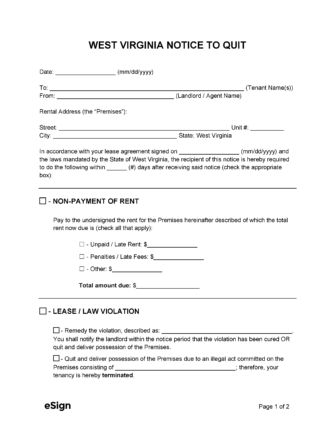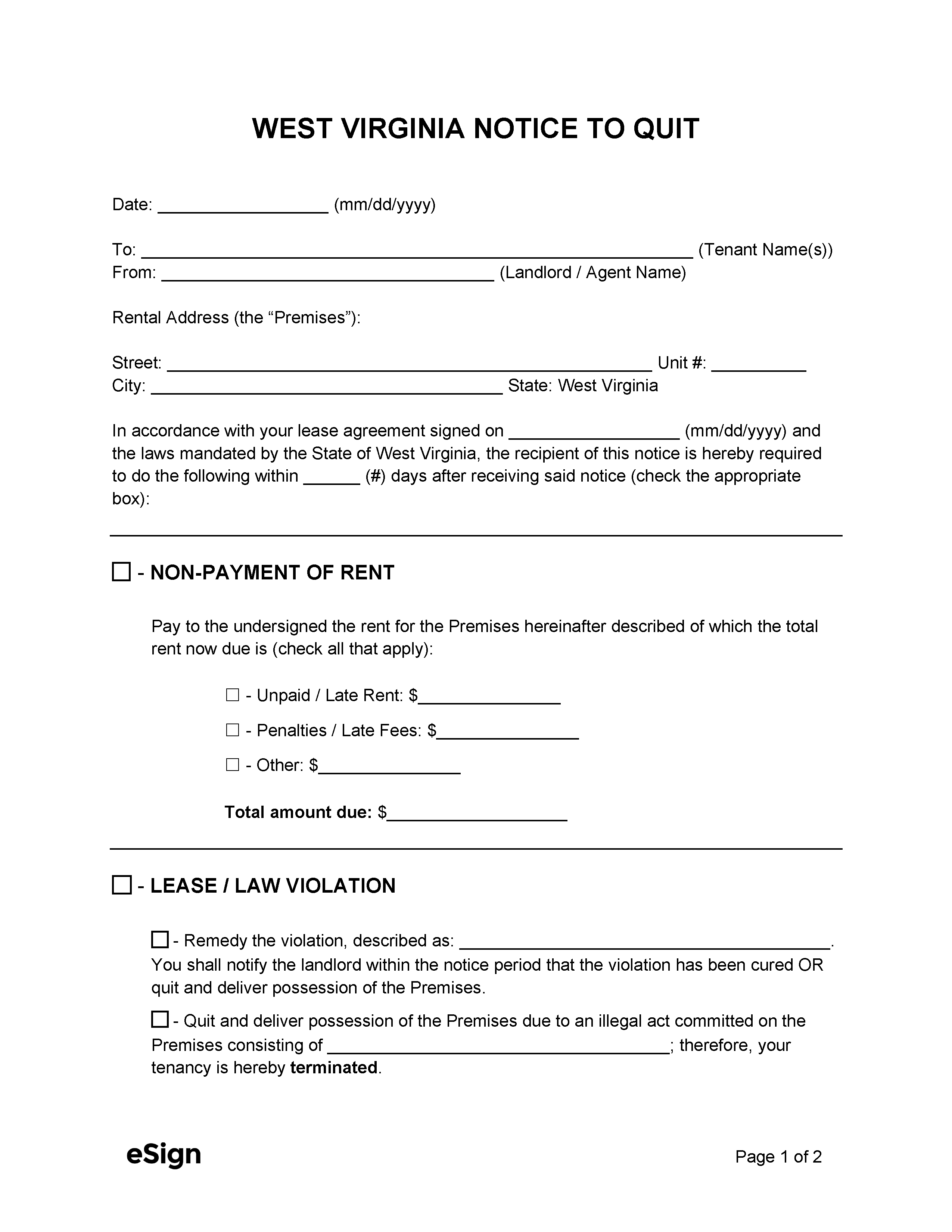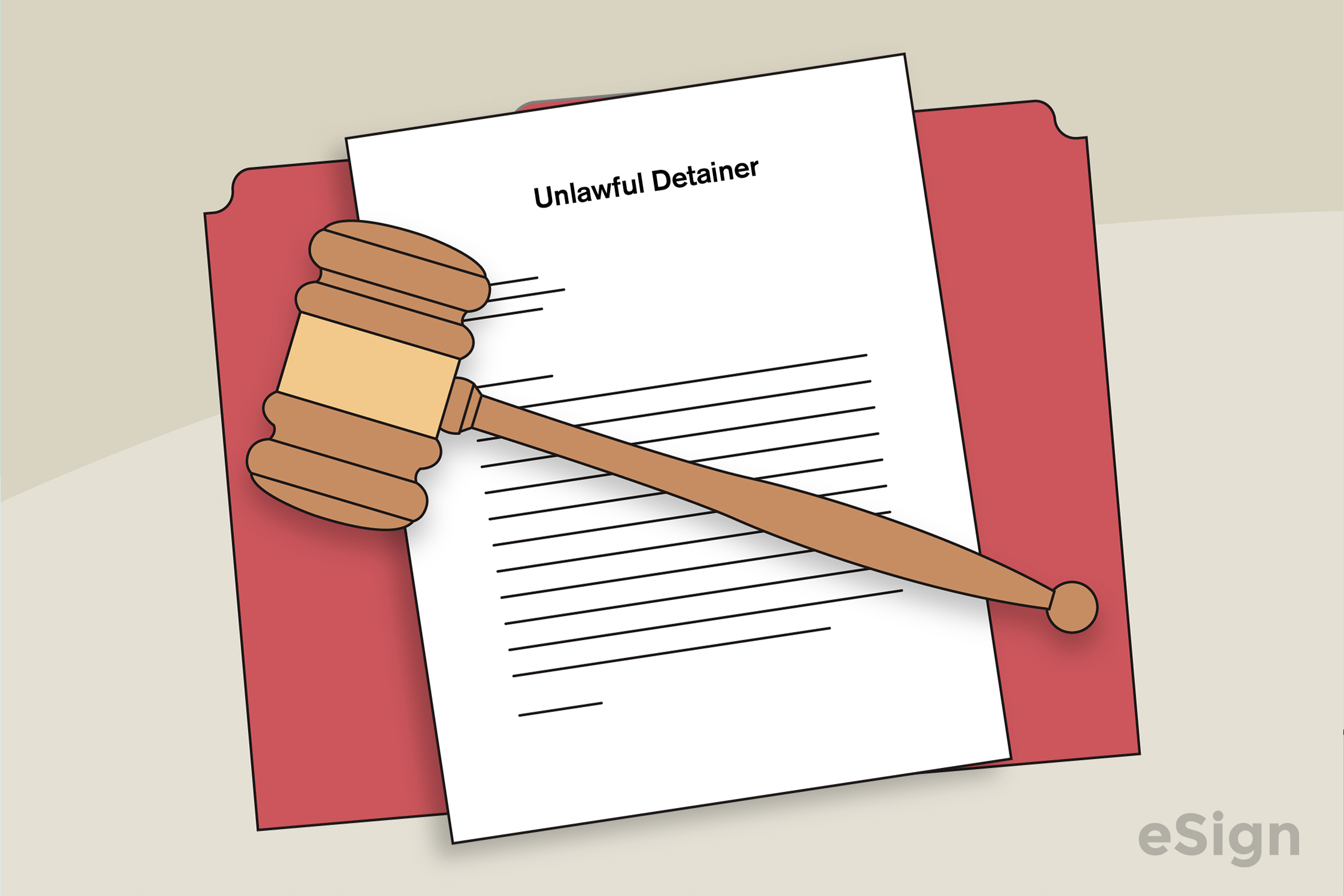Eviction Notices: By Type (4)
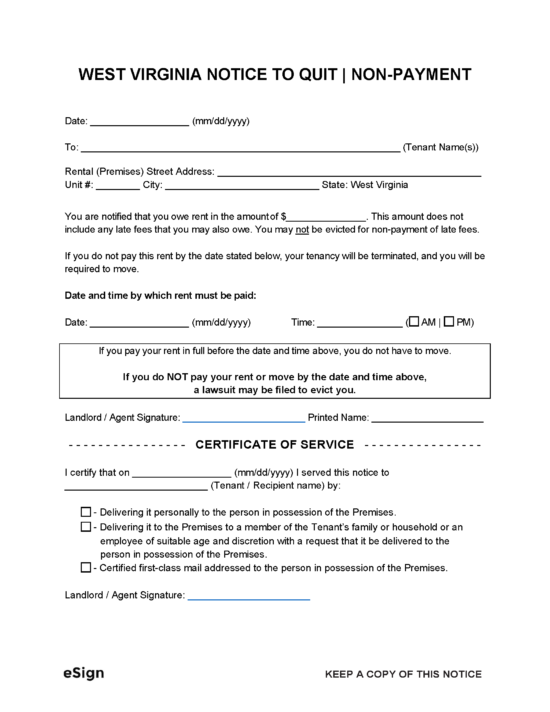
Notice to Quit | Non-Payment (Optional) – For a tenant who has failed to pay rent on time.
Download: PDF, Word (.docx), OpenDocument
|
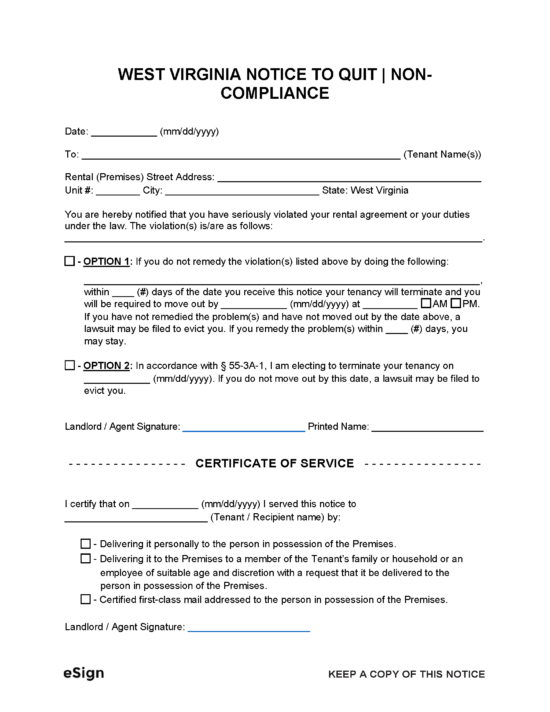 Notice to Quit | Non-Compliance (Optional) – Warns a tenant that they must vacate the premises due to a lease violation other than non-payment. Notice to Quit | Non-Compliance (Optional) – Warns a tenant that they must vacate the premises due to a lease violation other than non-payment.
Download: PDF, Word (.docx), OpenDocument |
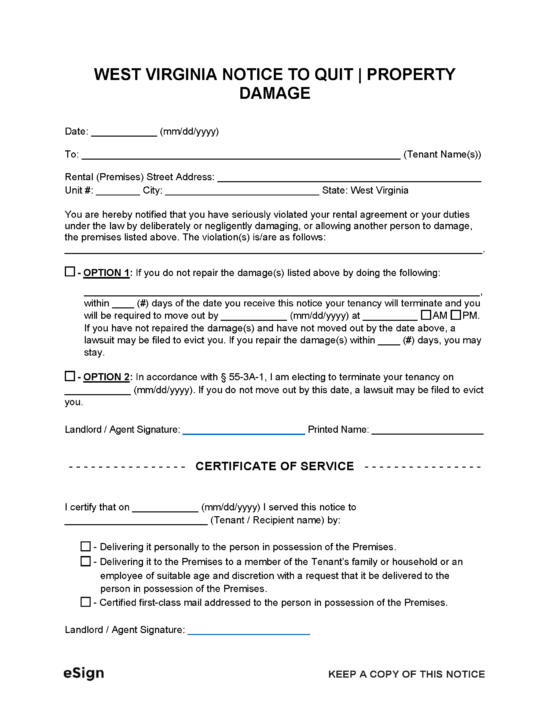 Notice to Quit | Property Damage (Optional) – Used to demand possession from a tenant who has deliberately or negligently damaged the landlord’s property. Notice to Quit | Property Damage (Optional) – Used to demand possession from a tenant who has deliberately or negligently damaged the landlord’s property.
Download: PDF, Word (.docx), OpenDocument |

1-Month Notice to Terminate | Month-to-Month Tenancy – Used by a landlord or a tenant to terminate a periodic lease.
Download: PDF, Word (.docx), OpenDocument |
Notice Requirements
How to Evict a Tenant in West Virginia
Step 1 – Notice to Quit (Optional)
When a tenant is in violation of their lease, the landlord is not required to send them a notice to quit, nor do they have to give the tenant the opportunity to cure the violation. The only mandatory notice to quit is the Notice to Terminate Month-to-Month Tenancy, whereas the following are optional:
Step 2 – Filing Eviction Suit
Any time a tenant has violated their lease, the landlord can file a wrongful occupation (eviction) suit with the magistrate or circuit court in the county where the property is located.
The landlord must file a Petition for Summary Relief and a Civil Summons and pay the appropriate fees. A hearing date and time must be requested as well, which must be between five and ten days from the date of the request.
Step 3 – Notify Tenant of Hearing

After the court sets a hearing date, the landlord must serve the Summons to the tenant. Typically, the landlord will pay the sheriff’s office to serve the hearing notice, but any disinterested party 18 or older can deliver the summons to the tenant in one of the following manners:
- In-person to the tenant
- In-person to a member of the tenant’s household over 16
- In-person to the tenant’s agent
- Certified mail with return receipt
- First class mail, postage prepaid
Step 4 – Tenant’s Answer
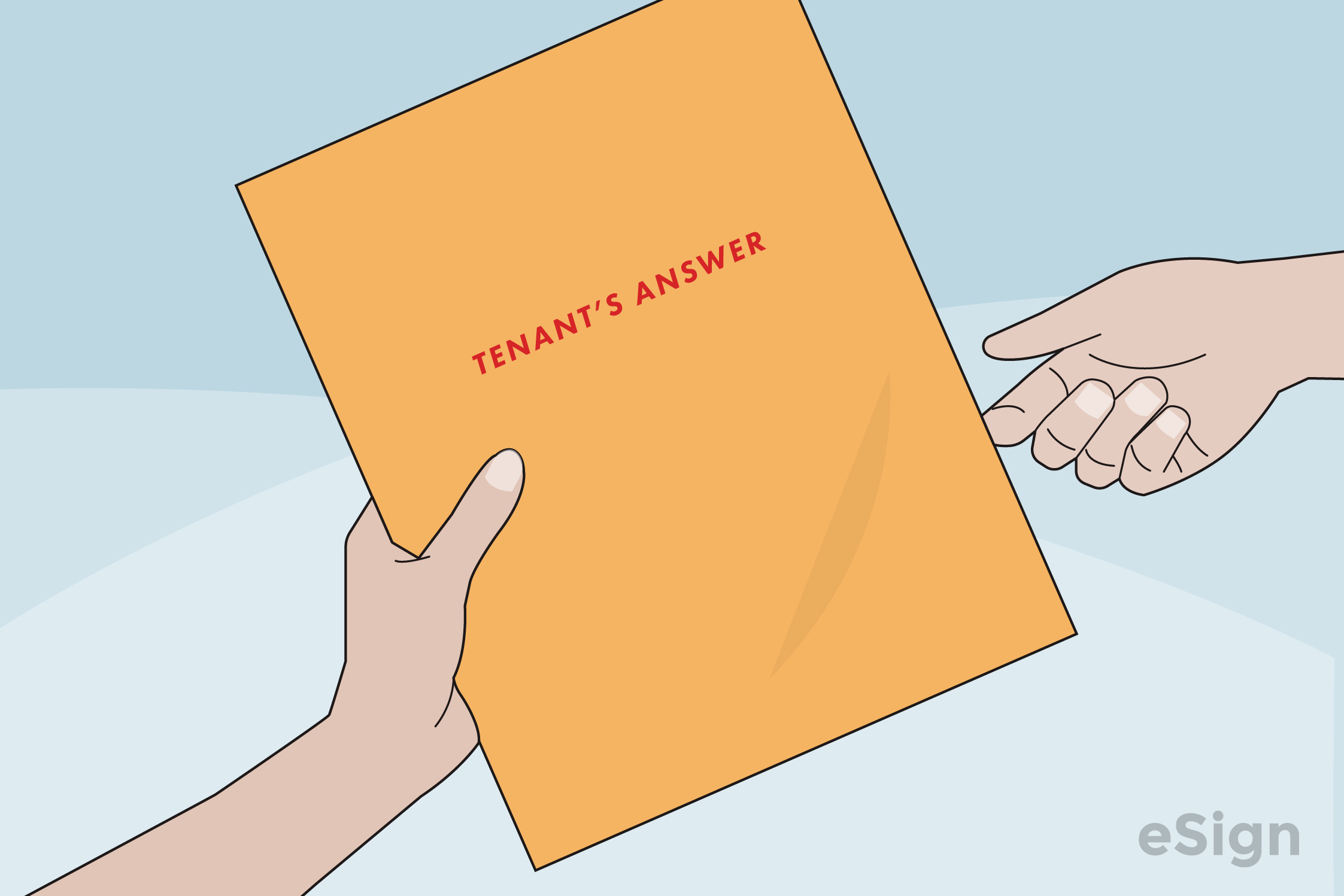
The tenant must file an Answer within five days of receiving the Summons, with a copy delivered to the landlord.
If the tenant is being sued for at least $2,500, they can request that the case be transferred from magistrate to circuit court to be heard by a judge.
Step 5 – Pay and Dismiss (If Applicable)
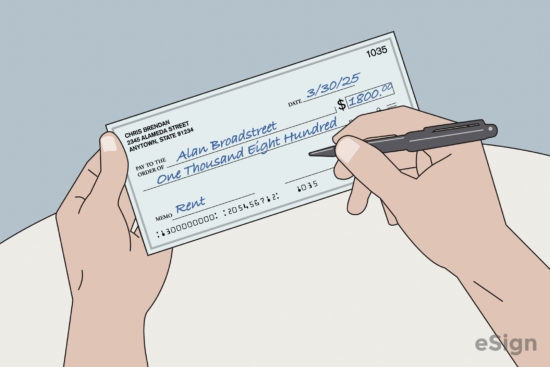
Step 6 – Court Hearing
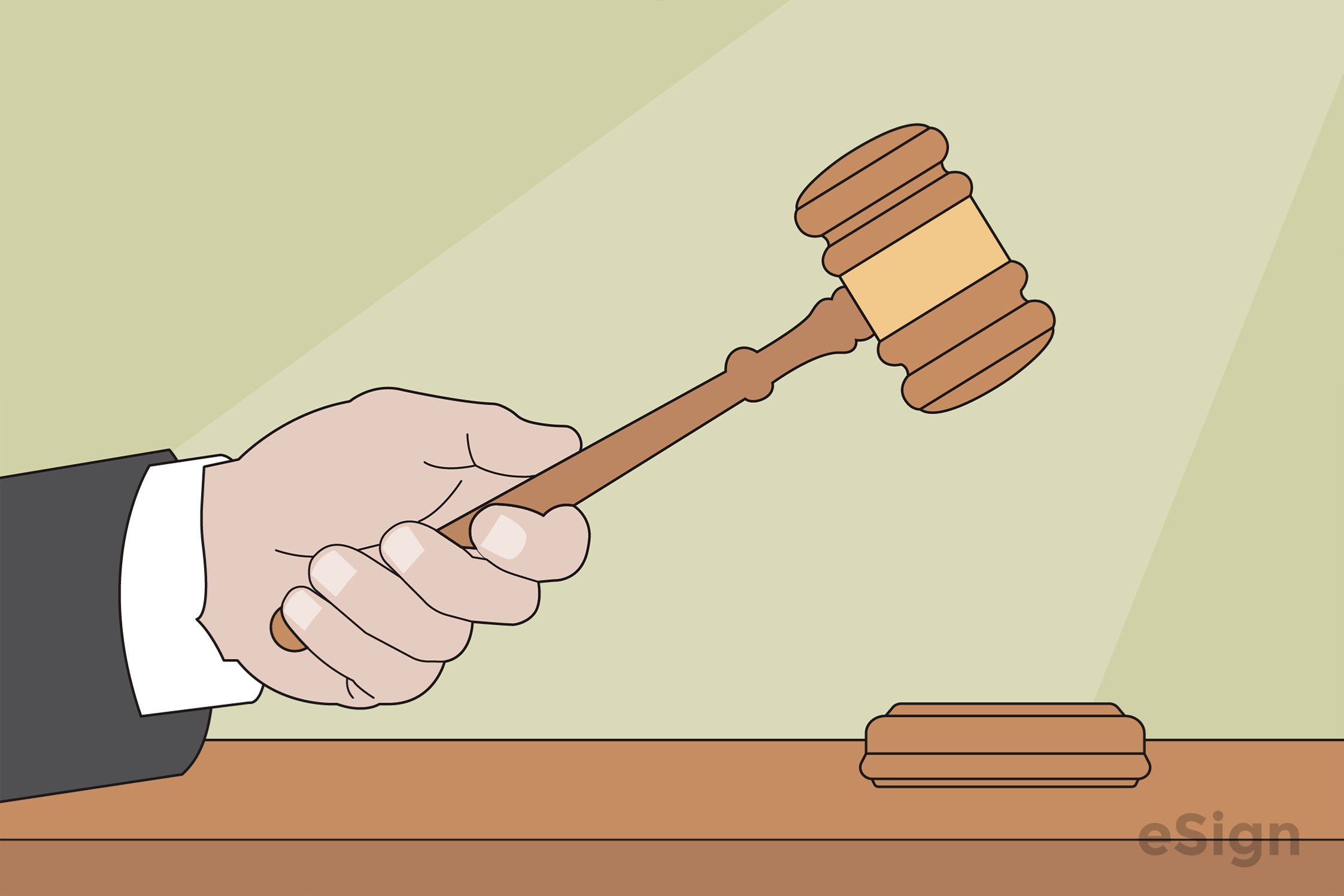
Step 7 – Writ of Possession

Court Forms + Resources
Forms
- Answer to Wrongful Occupation
- Signing: Tenant
- Civil Summons for Wrongful Occupation
- Signed by: Court Clerk, Process Server, and Notary Public
- Petition for Summary Relief of Wrongful Occupation
- Signed by: Landlord and Notary Public
- Writ of Possession
- Signed by: Judge or Magistrate
Resources
